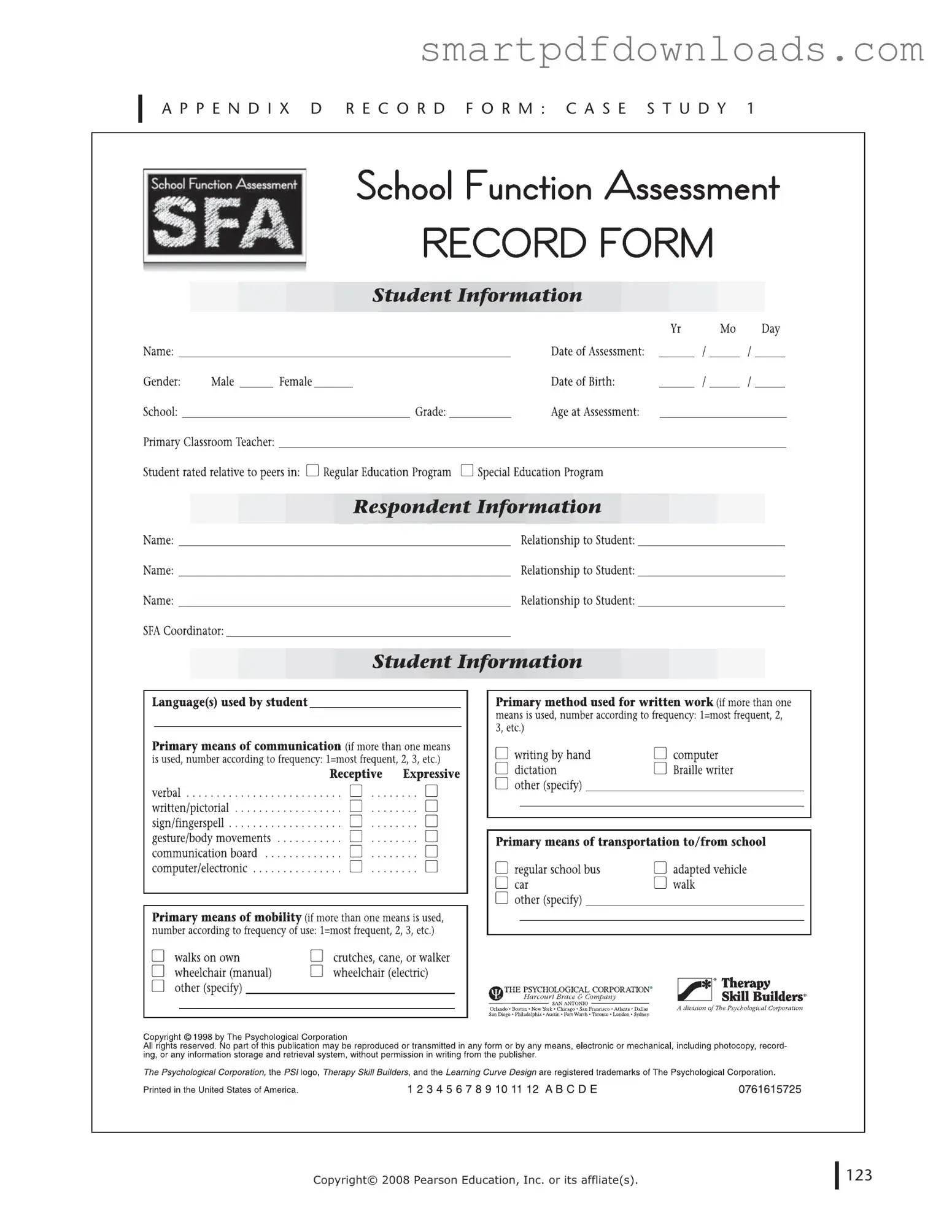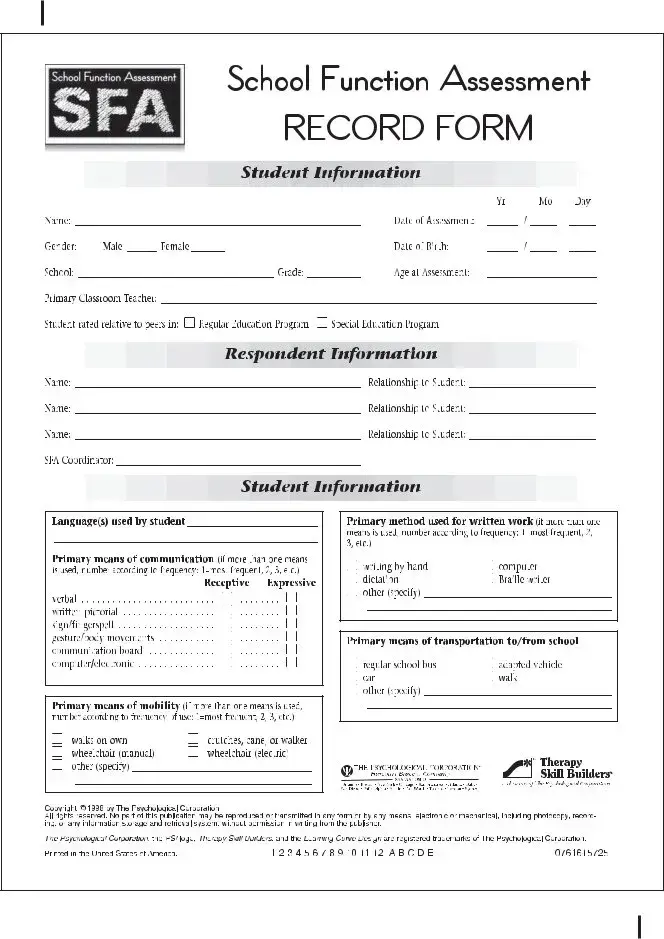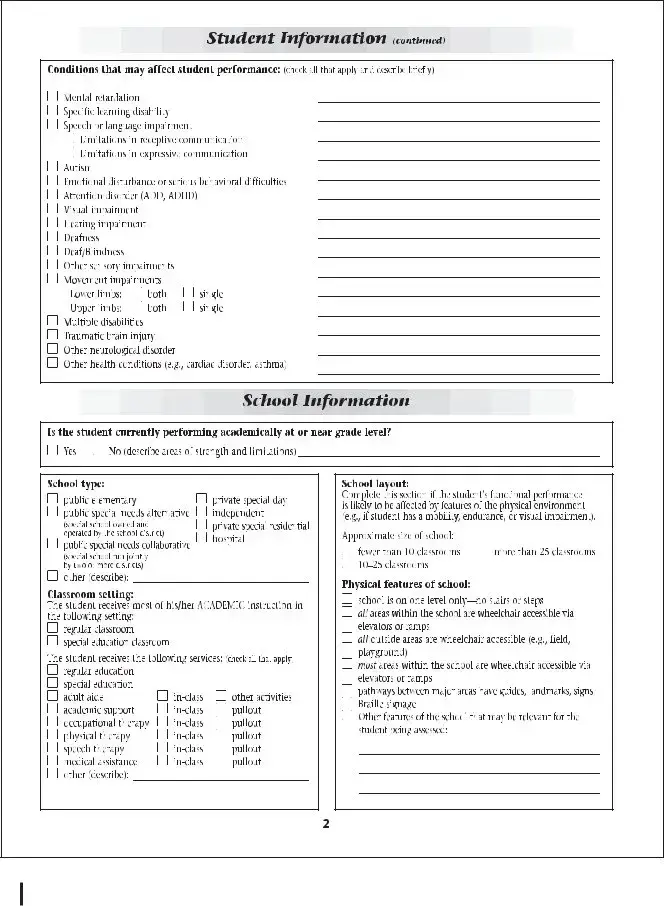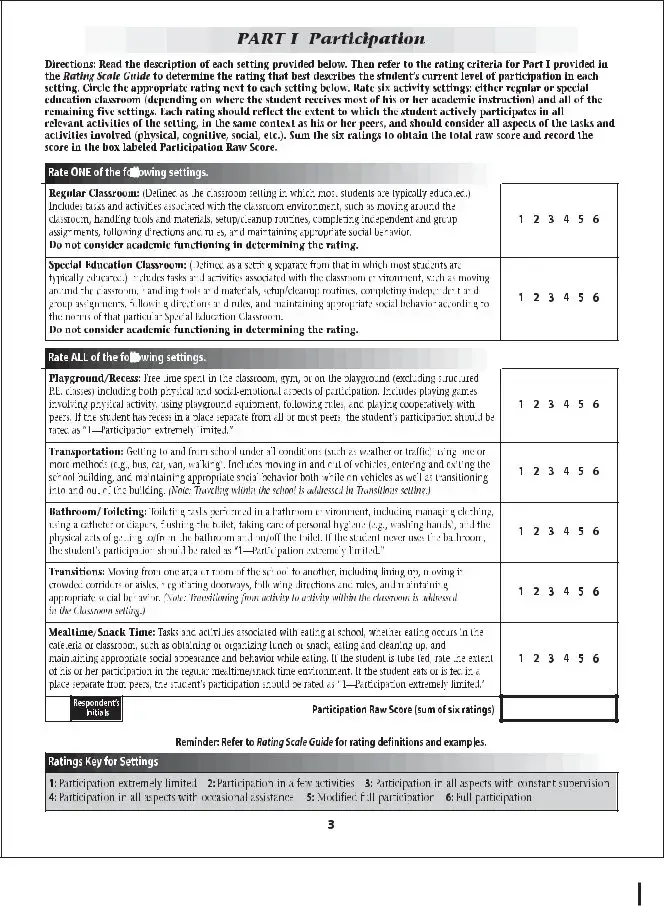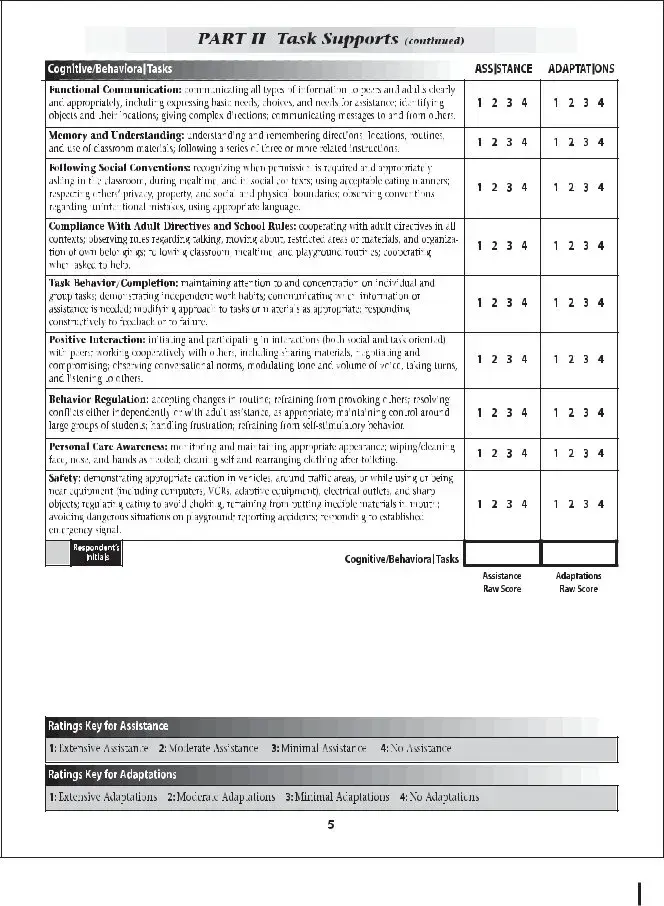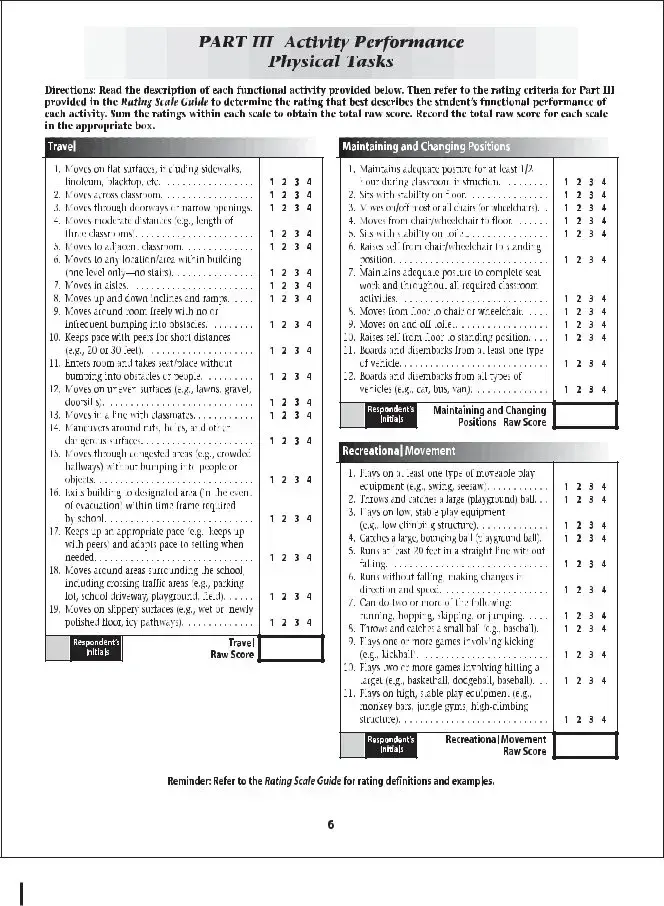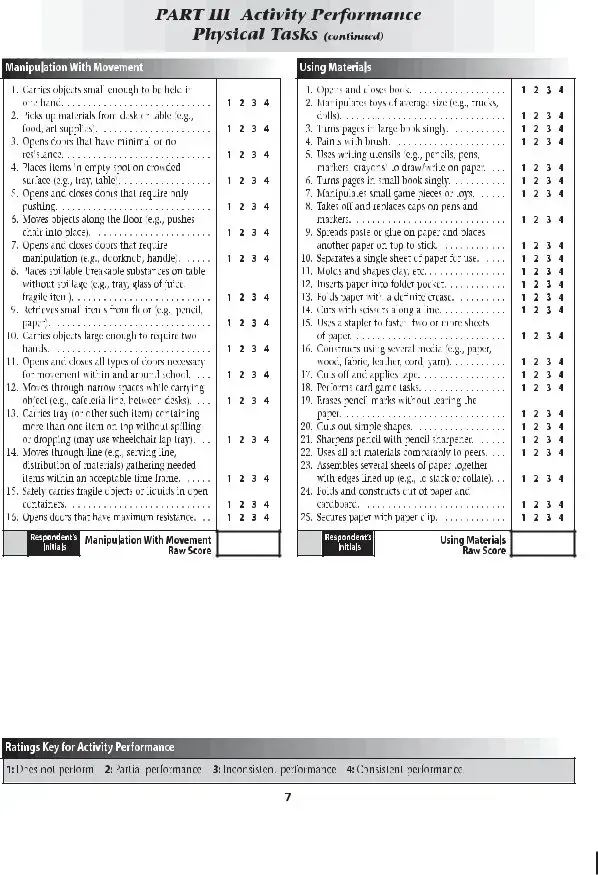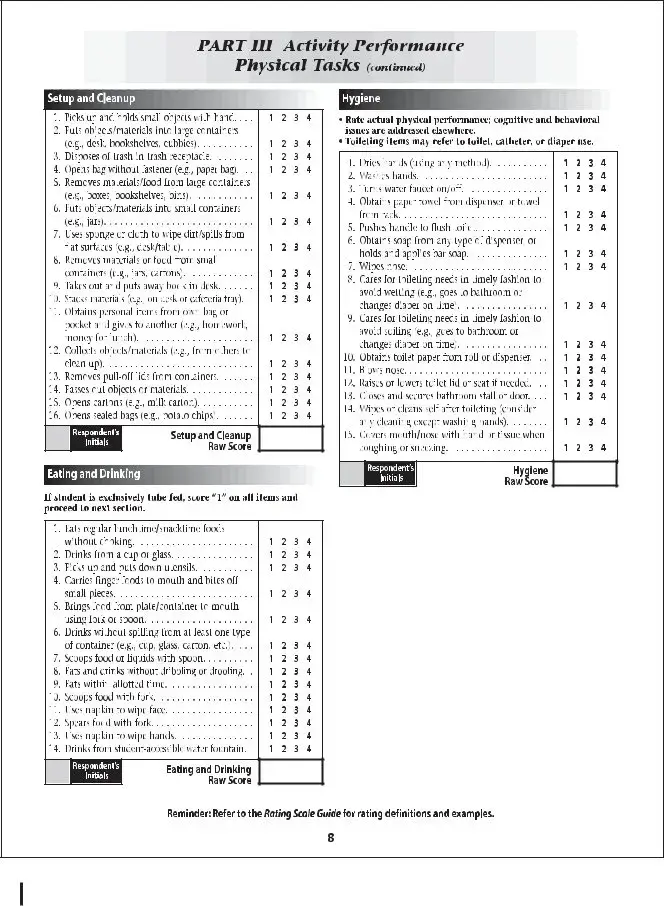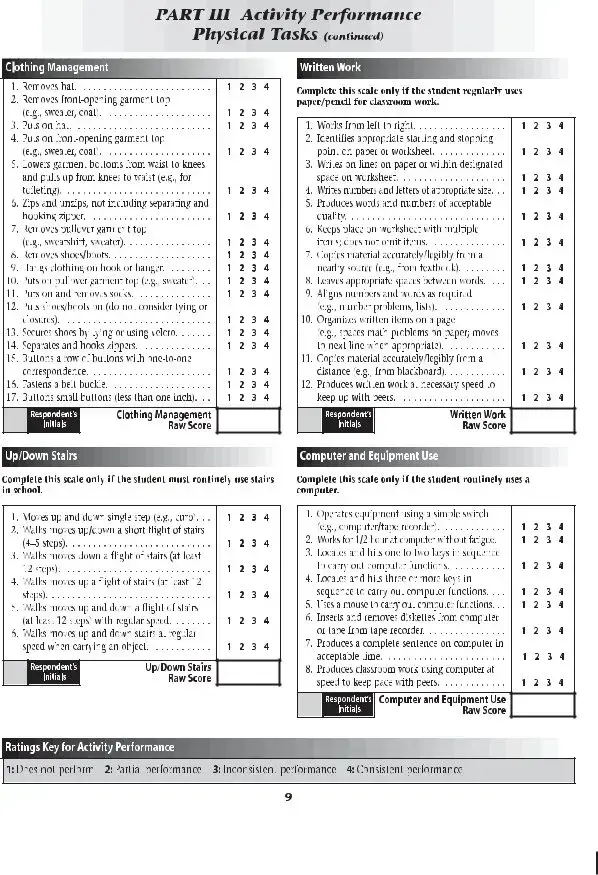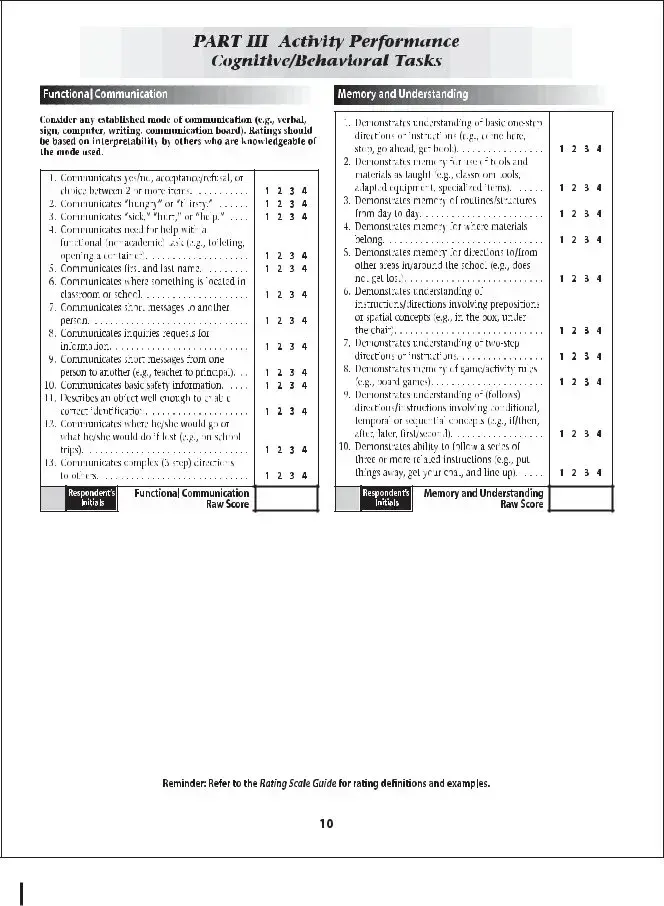School Function Assessment Form
The School Function Assessment form is a tool used to evaluate a student's participation in school-related activities. It helps identify the strengths and challenges that students face in their daily school routines. By gathering this information, educators and support staff can create tailored strategies to enhance a student's learning experience.
Edit School Function Assessment Online
